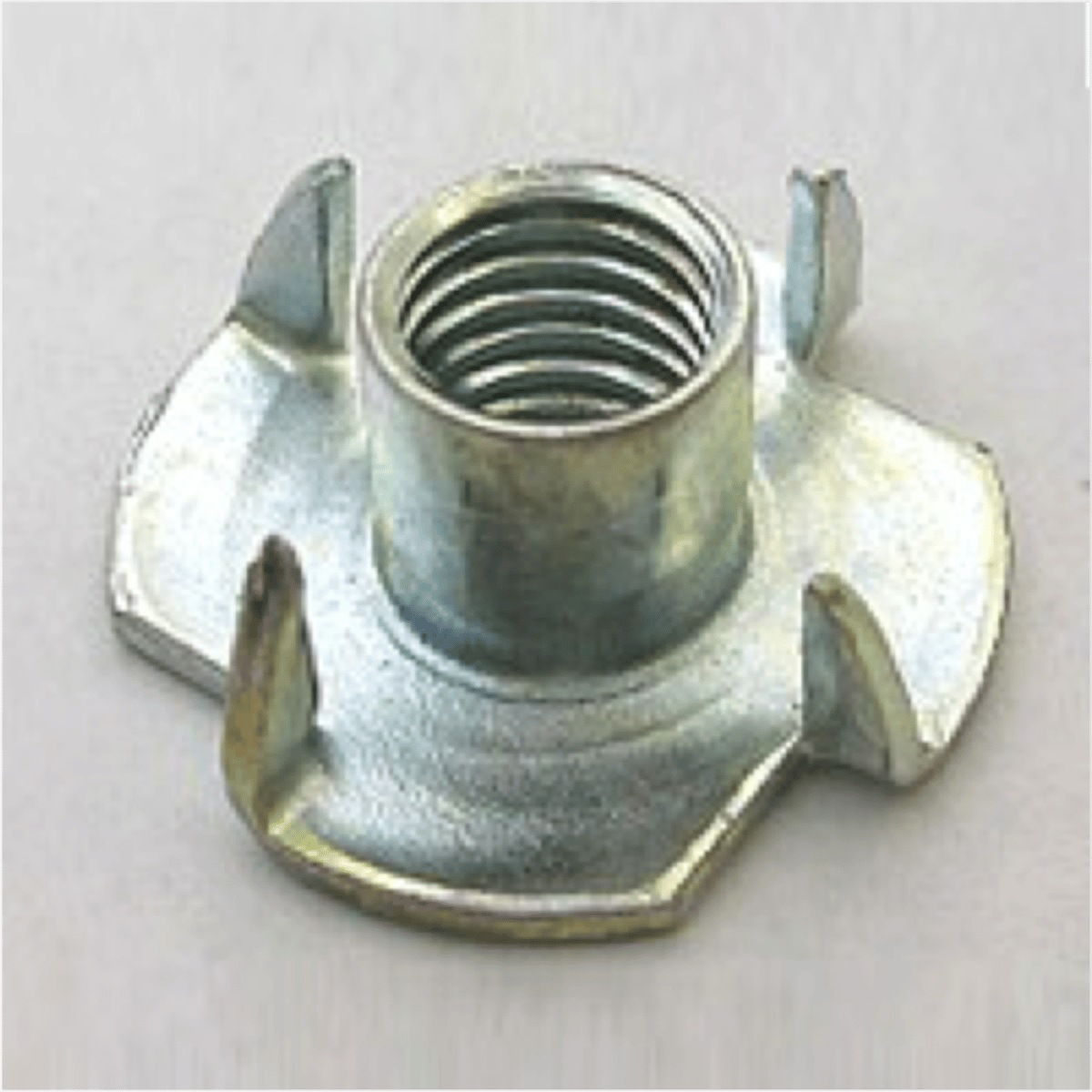Week 2: power tools, fasteners: nails, staples, screws, & bolts
1/45
There's no tags or description
Looks like no tags are added yet.
Name | Mastery | Learn | Test | Matching | Spaced |
|---|
No study sessions yet.
46 Terms
Box Nail. Similar in shape to the common nail, it has a narrower shaft that reduces the chance of splitting the lumber. Most commonly used with thinner lumber
What type of nail is this? (Narrower shaft, but still long)
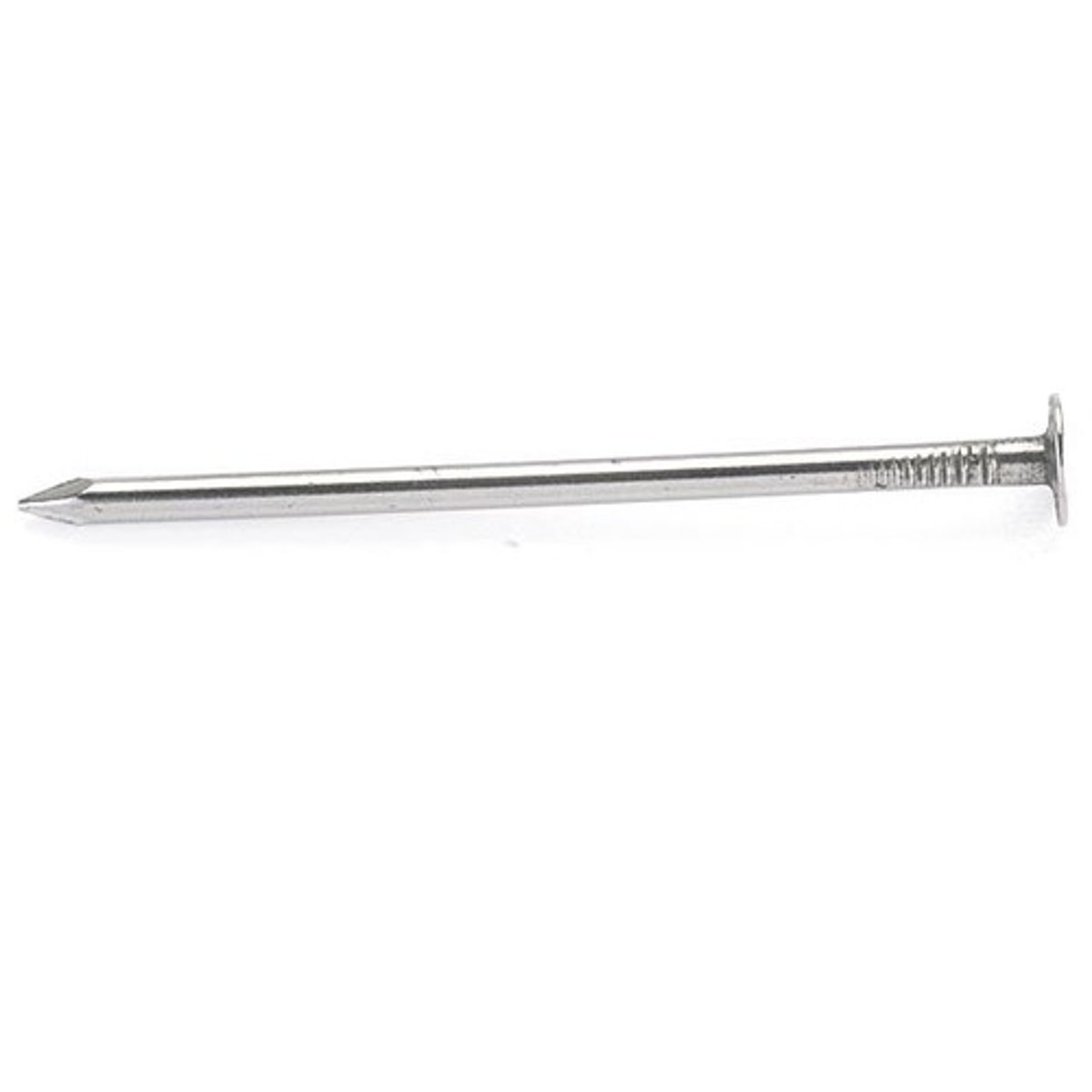
Finnish Nail. Has a slender shaft and a very narrow, almost nonexistent head. Designed so that the head can be driven below the surface of the wood and the resultant hole filled with putty or filler. Not normally used in general scenic construction but is employed in the building of props or furniture and at any time that it is desirable to hide the nail head. Carpentry, crown molding, details in a house or set
What type of nail is this? (Very narrow head)
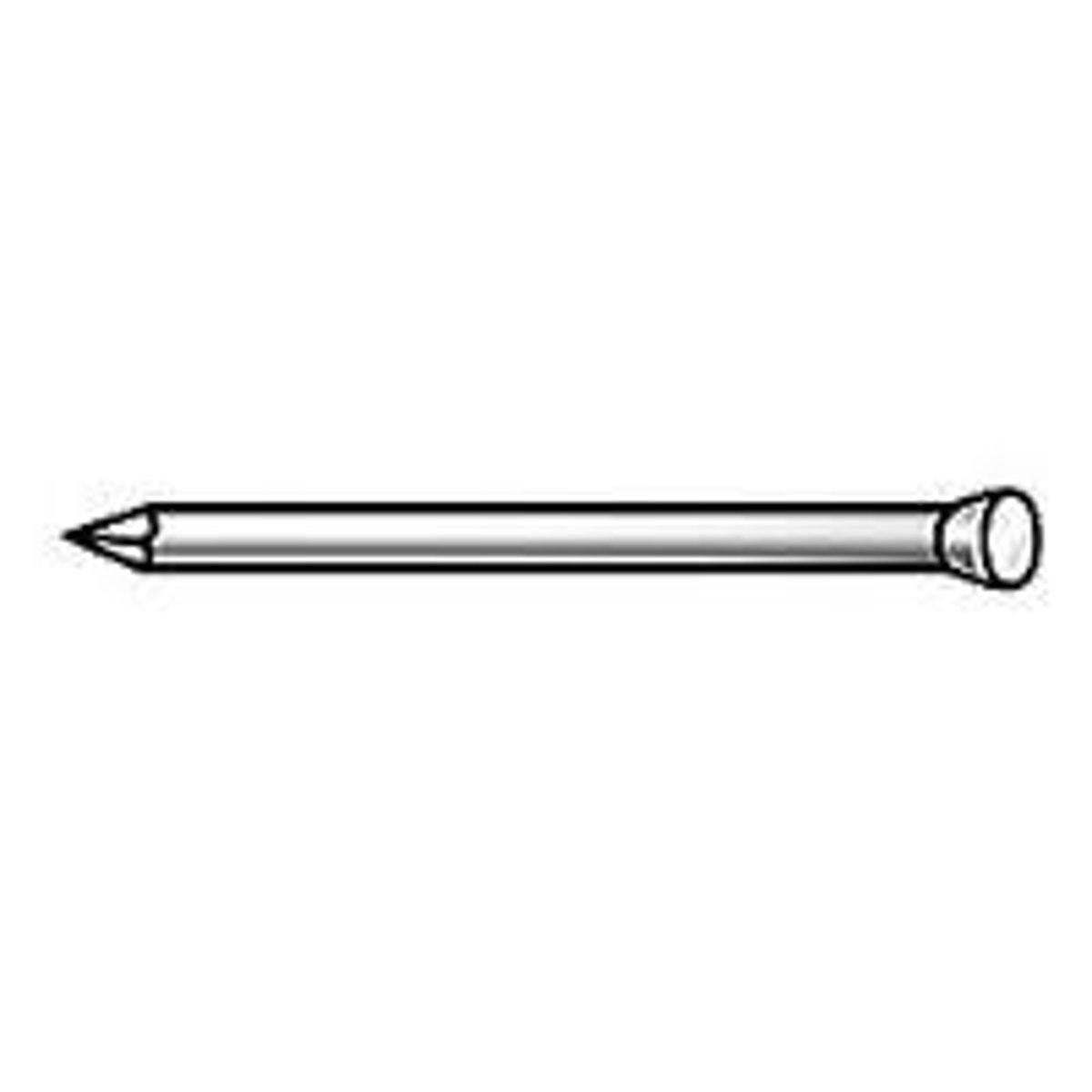
Double-Headed Nail. AKA scaffolding nails. They are driven into the wood until the lower head is flush with the surface, leaving the upper head exposed so that it can be pulled out easily. As the secondary name implies, these nails are used for scaffolding or any temporary structure that you may want to dismantle quickly.
What type of nail is this? (Two heads)
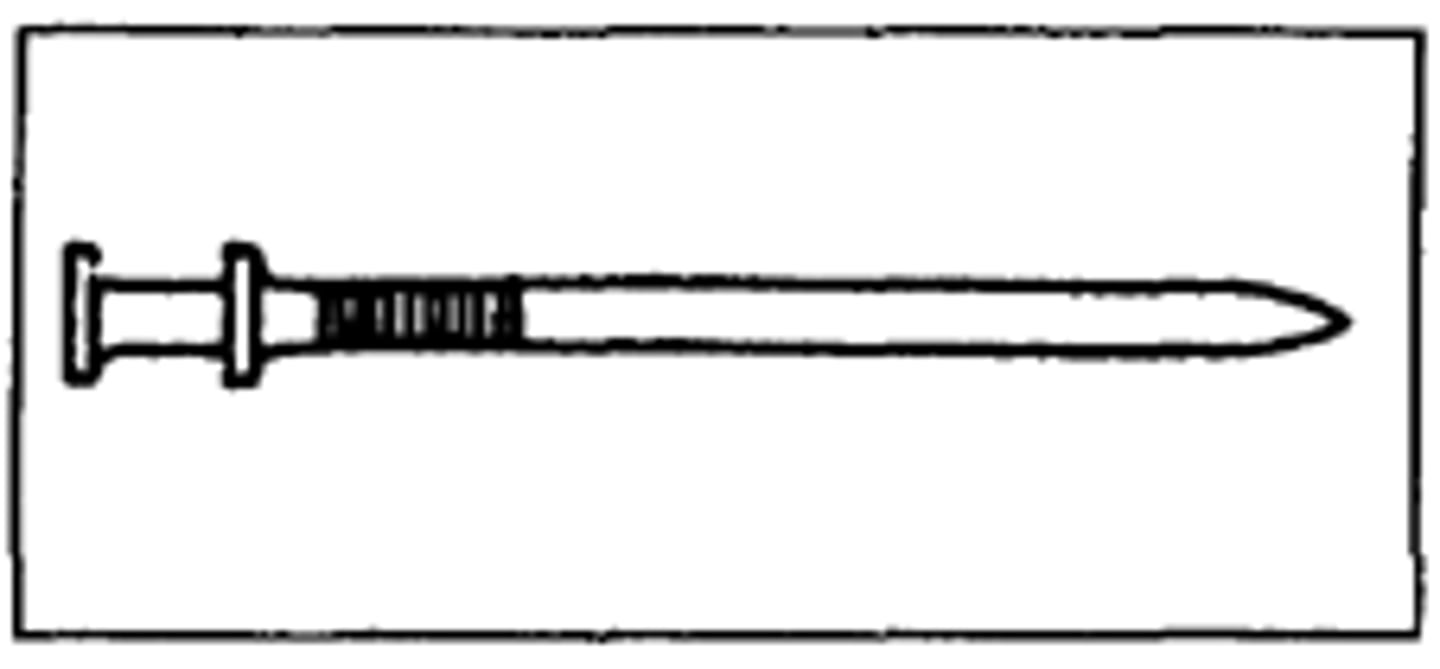
T-Nail. Nails with thick, strong shafts. The head forms a T. Manufactured in clips for use with pneumatic nailers in wood, metal, and concrete. Used for attaching platform tops to steel-framed platforms and similar uses. Can go through concrete and light gage metals. Cost a couple of cents each. Don't need as many holes.
What type of nail is this?

Length, diameter in decimal inches, collation type and angle
How are collated round headed nails specified?
Nails held together so you can put them in a nail gun
What are collated nails?
Pin Nail, smaller than brad nails, less holding power, used to temporarily pin a workpiece down.
What type of nail is this? (Only use with pneumatic tools, smallest nail)
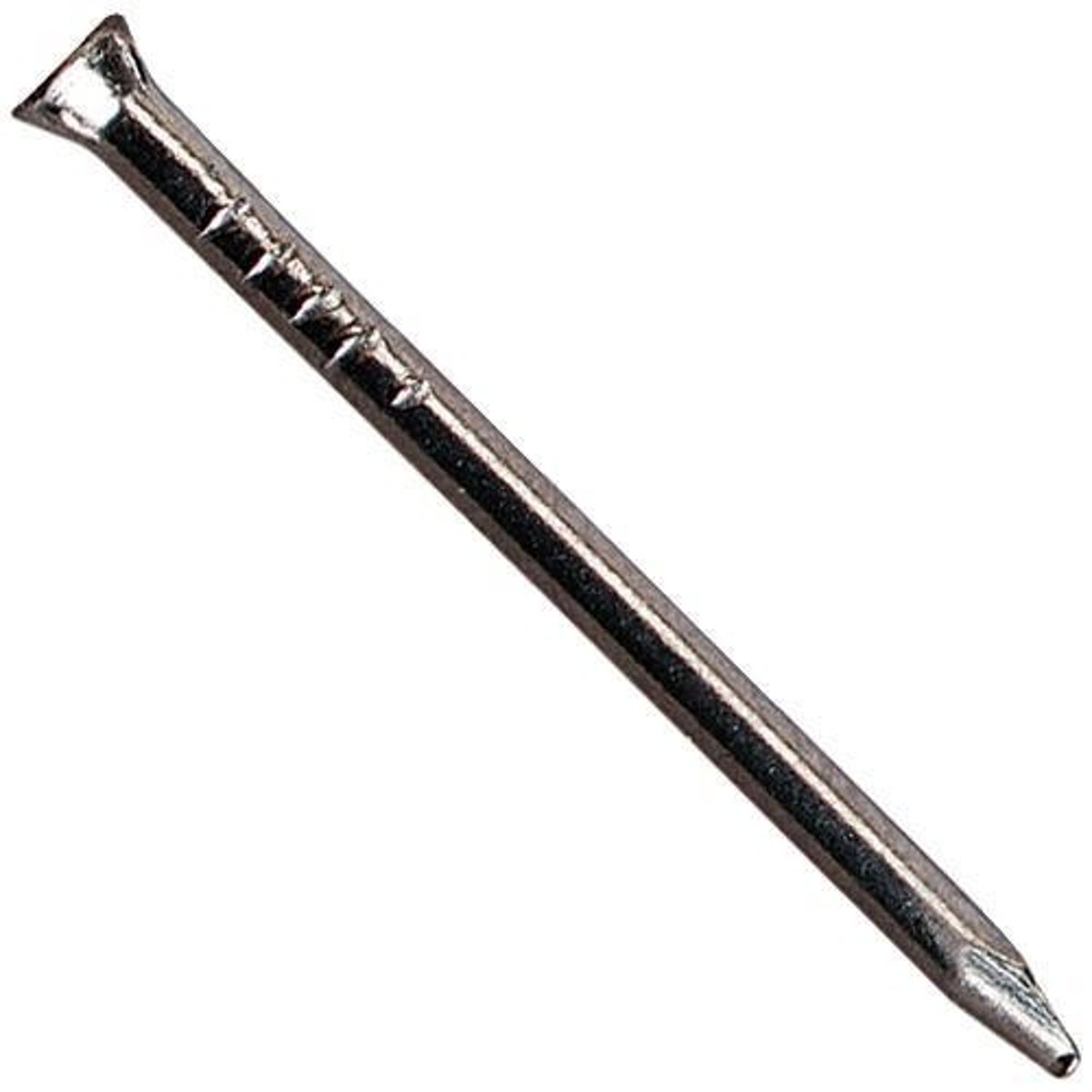
Length, wire gauge, collation angle
How are collated pneumatic finish nails/brads/pins specified?
A number on the box that measures the size of the wire on collated pneumatic nails: Bigger # = smaller wire
What is wire gauge?
Flat
What screw head is this?
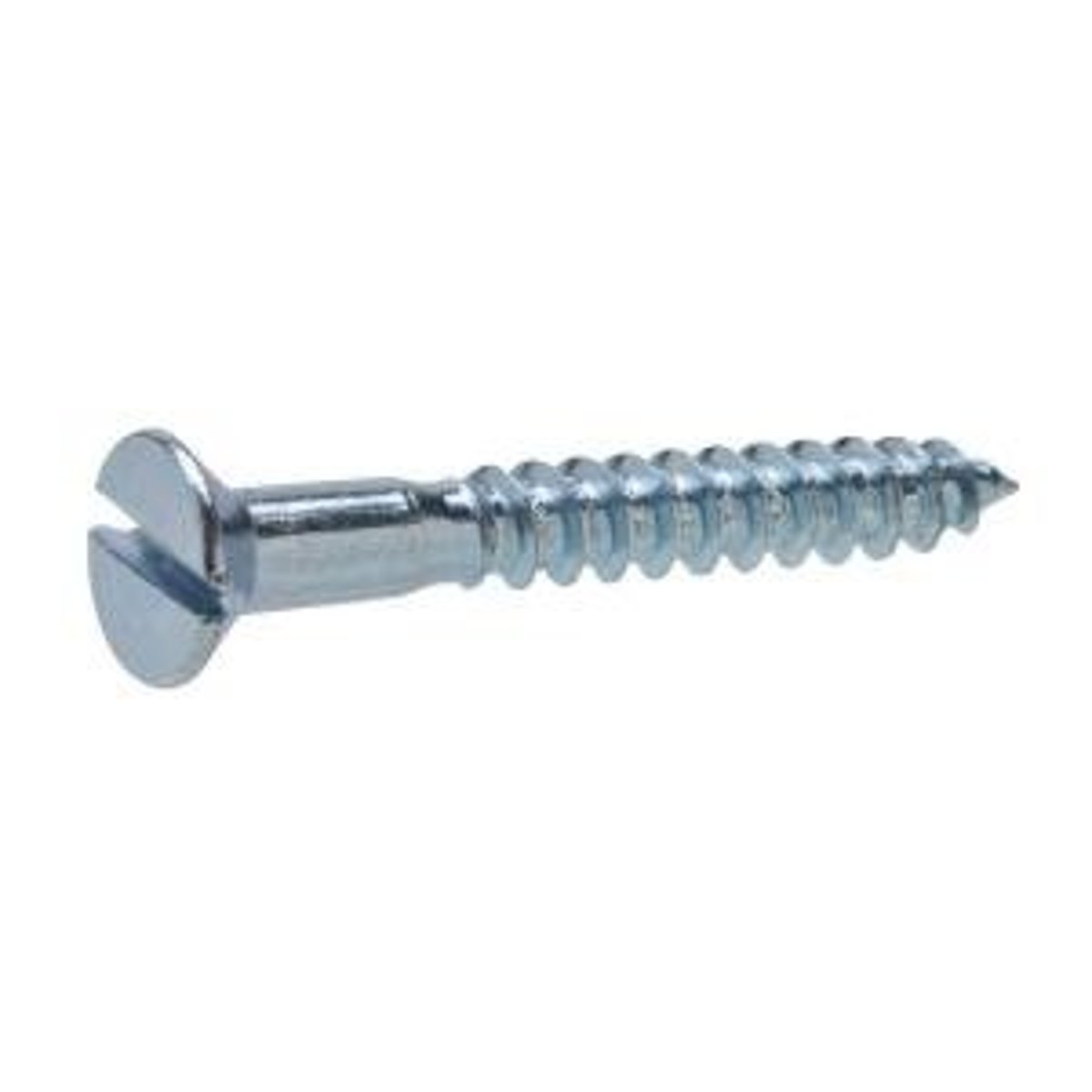
Pan
What screw head is this?
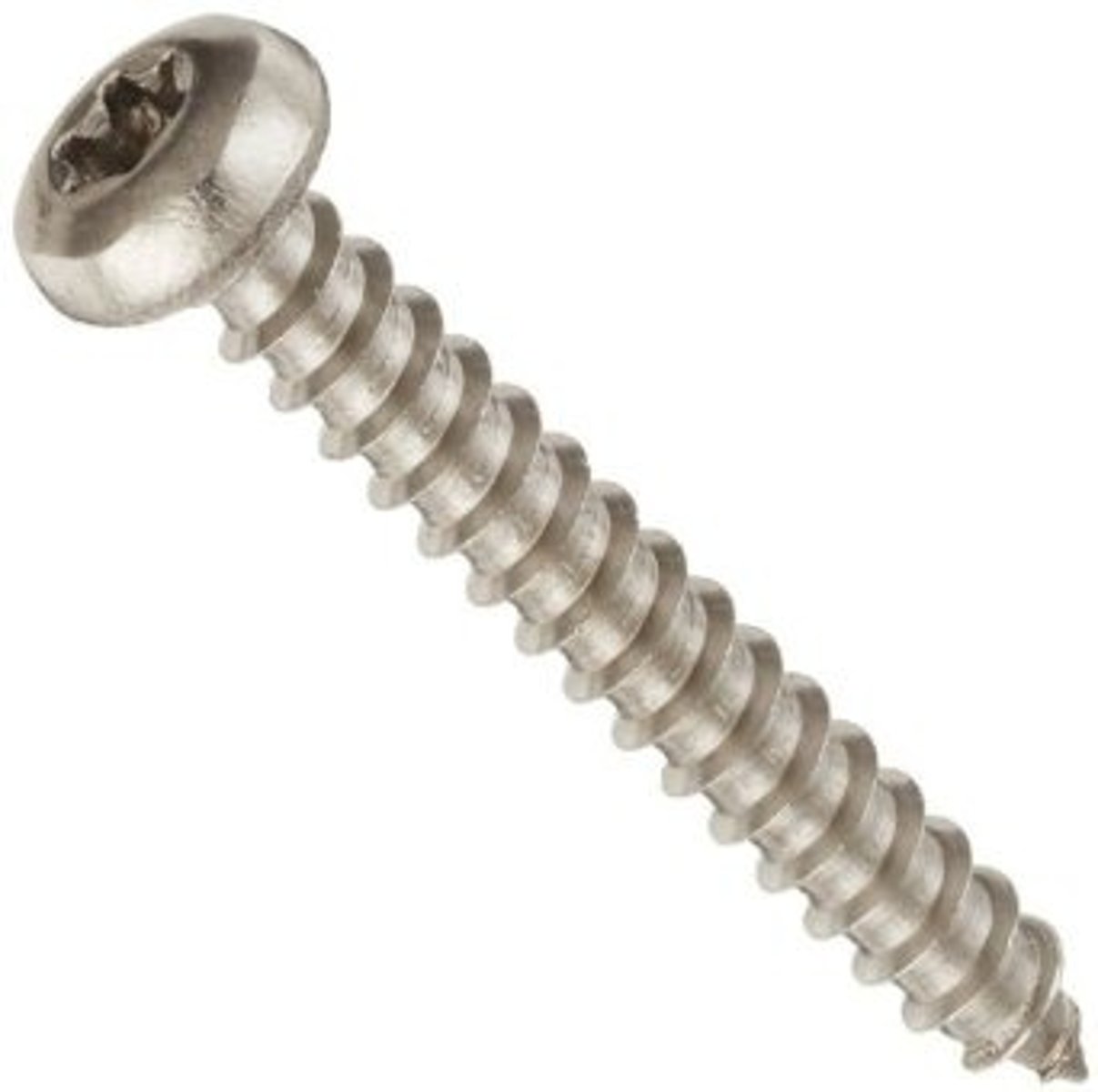
Oval
What screw head is this?

Oval is measured from the top of the head to the end of the screw. Other things like the pan are measured from under the head to the end of the screw.
How is screw length measured depending on head type
A hole you pre-drill in order to screw/drill in a screw easier
What is a pilot hole?
Sheet Metal Screw: Usually either pan head or a hex head. Usually either shank lengths between ¼ and ¾ inch. Harder and tougher, use when weight rests on screws (doors, metal, etc.)
What type of screw is this?
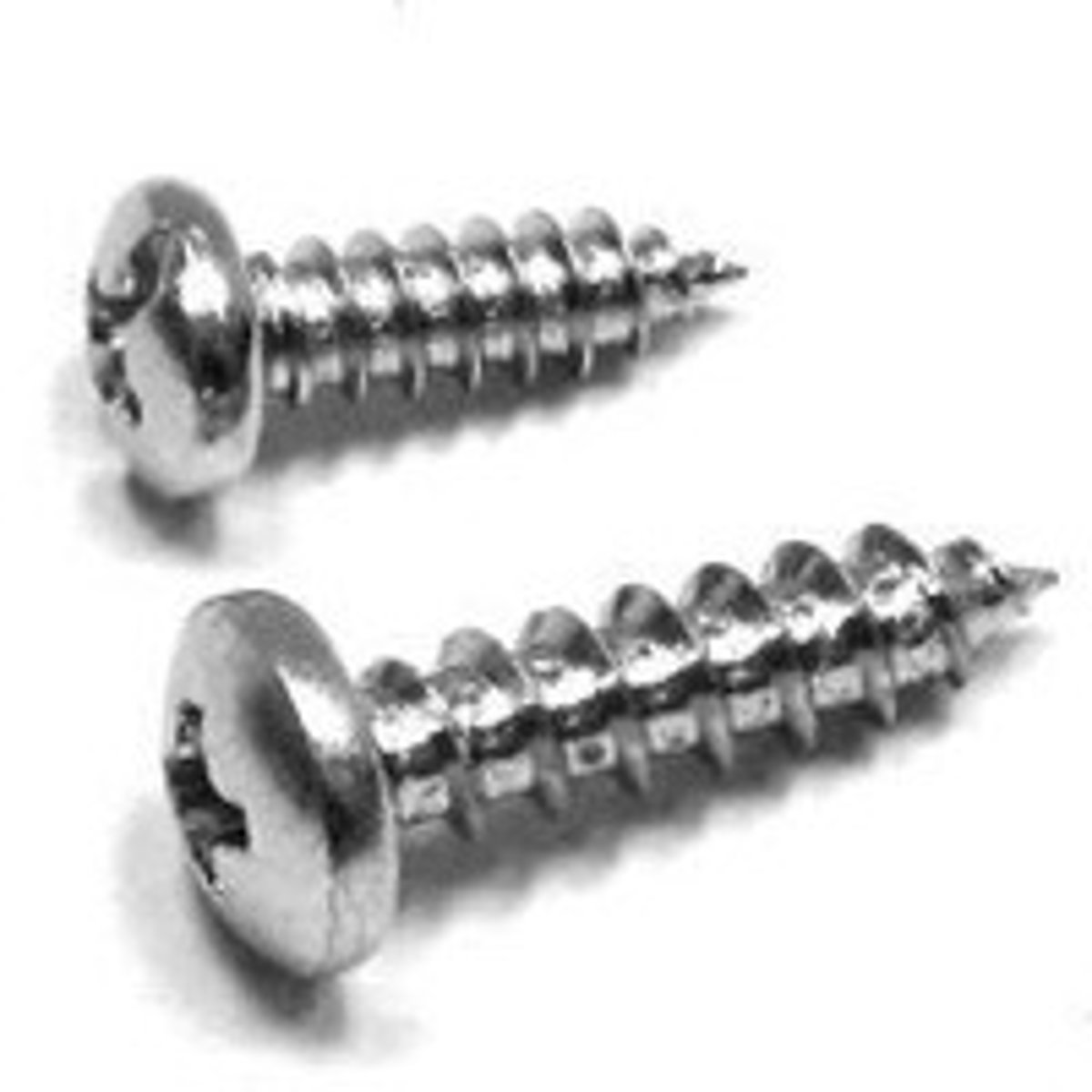
Flat Bolt Head
What type of bolt head is this?
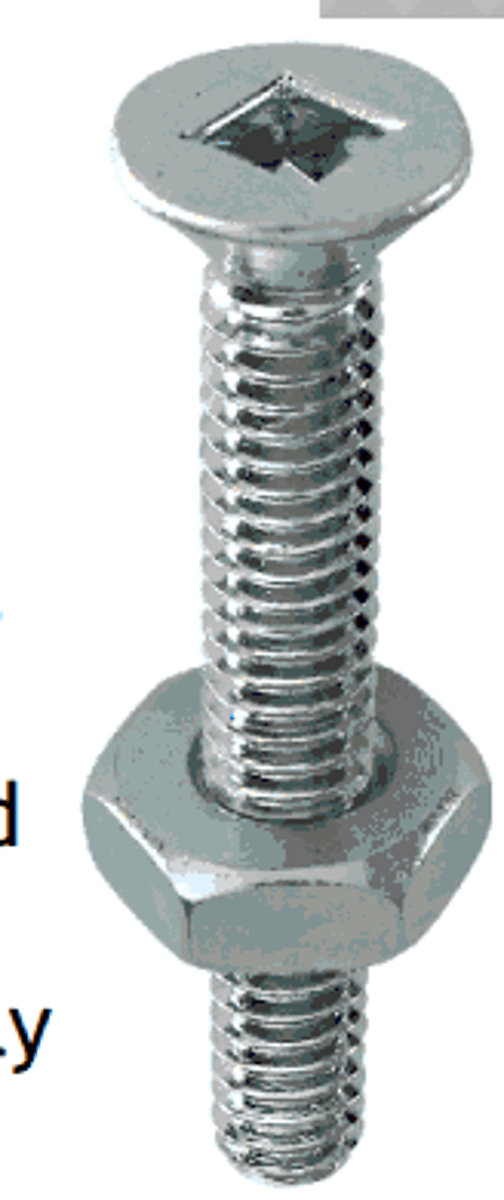
Round Bolt Head
What type of bolt head is this?
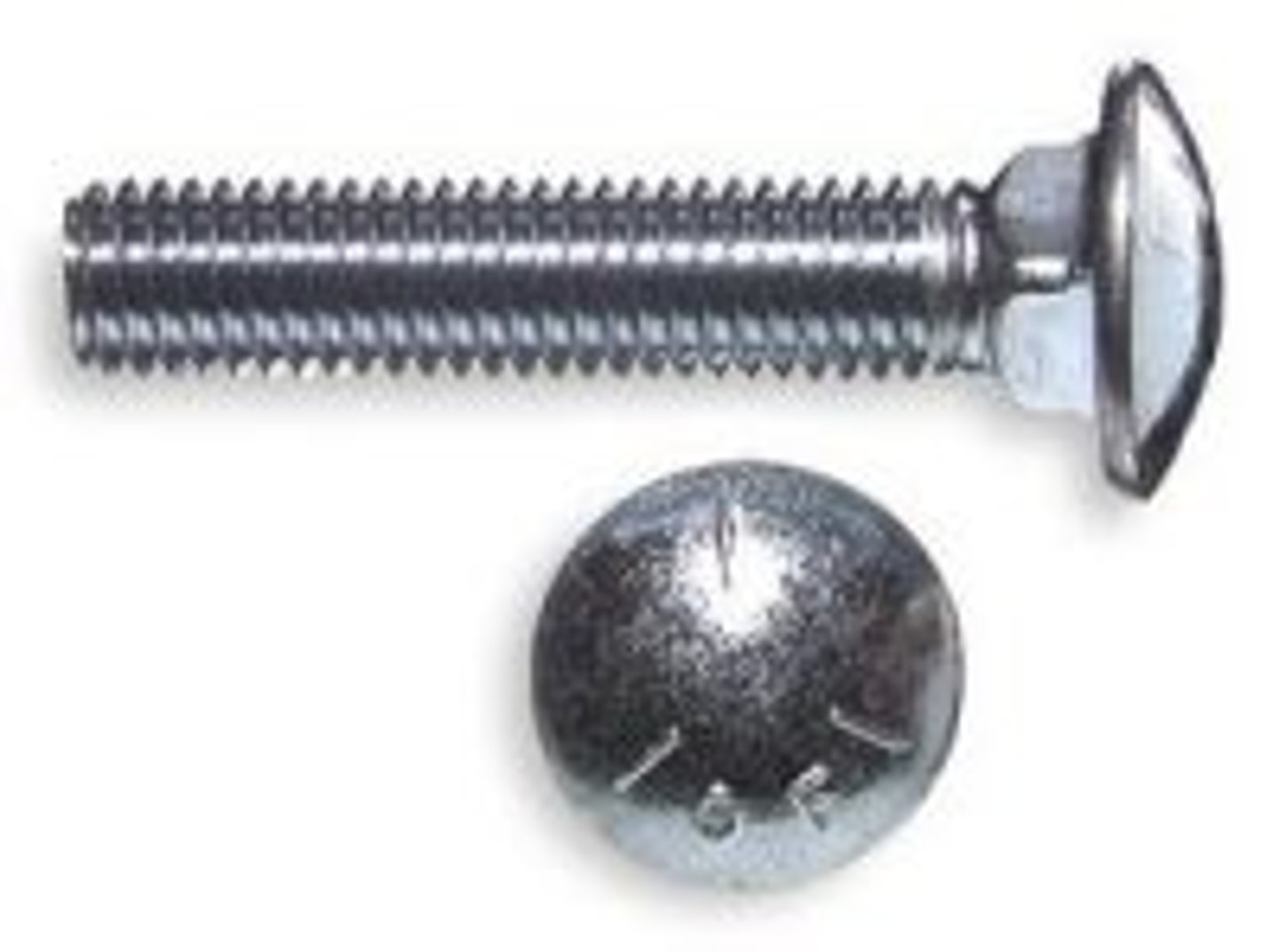
Hex Bolt Head
What type of bolt head is this?
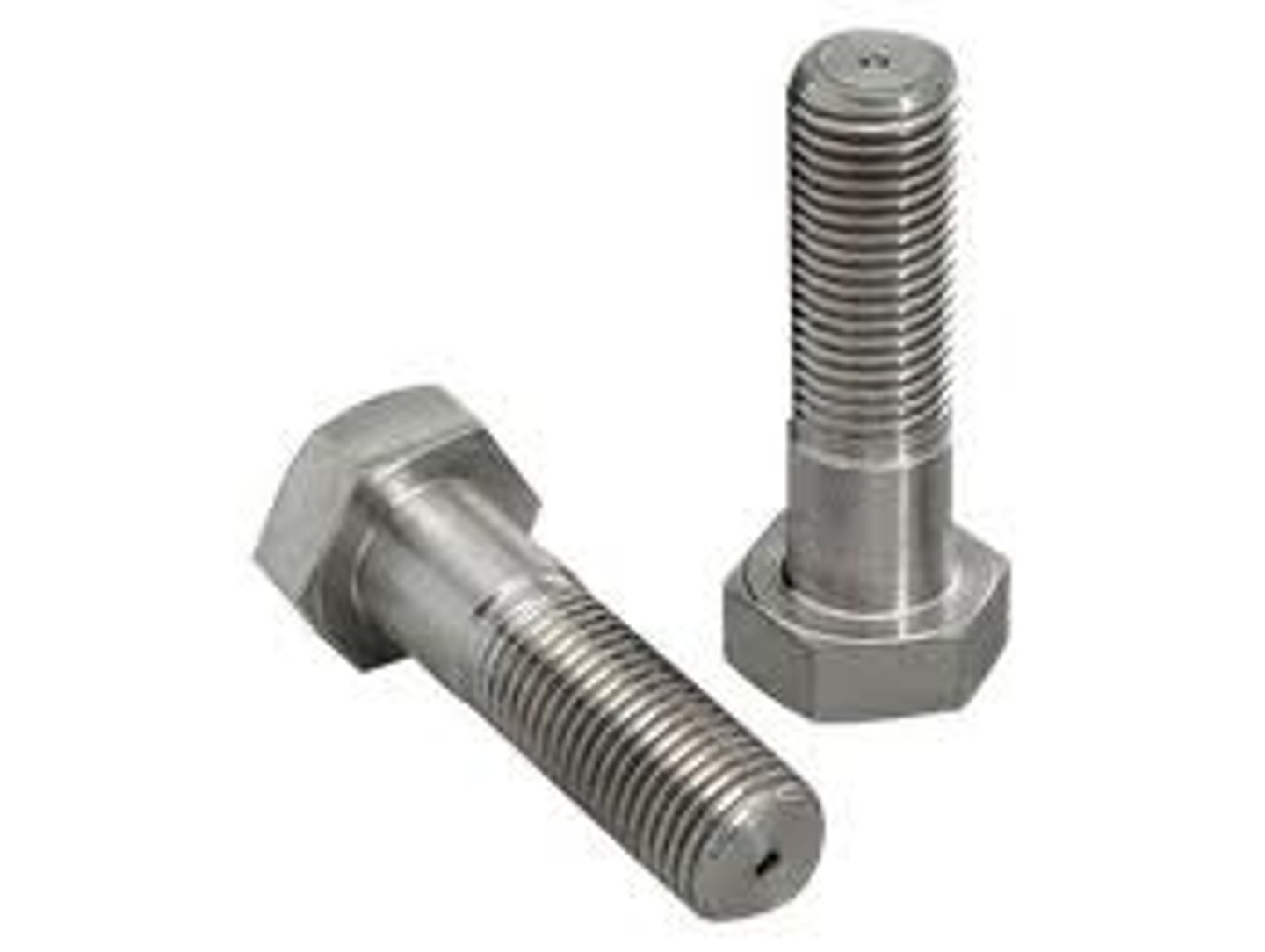
Machine screws are fully threaded, while bolts might only have threads on the bottom
What's the difference between bolts and machine screws?
Screw gauge or fractional inches
How are the diameters of bolts and machine screws measured?
Threaded insert: A tube that is threaded on both the inside and outside. It can be used in wood, plastic, or metal. The top of the insert is slotted so it can be twisted into the supporting wood, plastic, or metal with a screwdriver. Wood threads on the outside, machine threads on the insides
Is this a t-nut or a threaded insert?
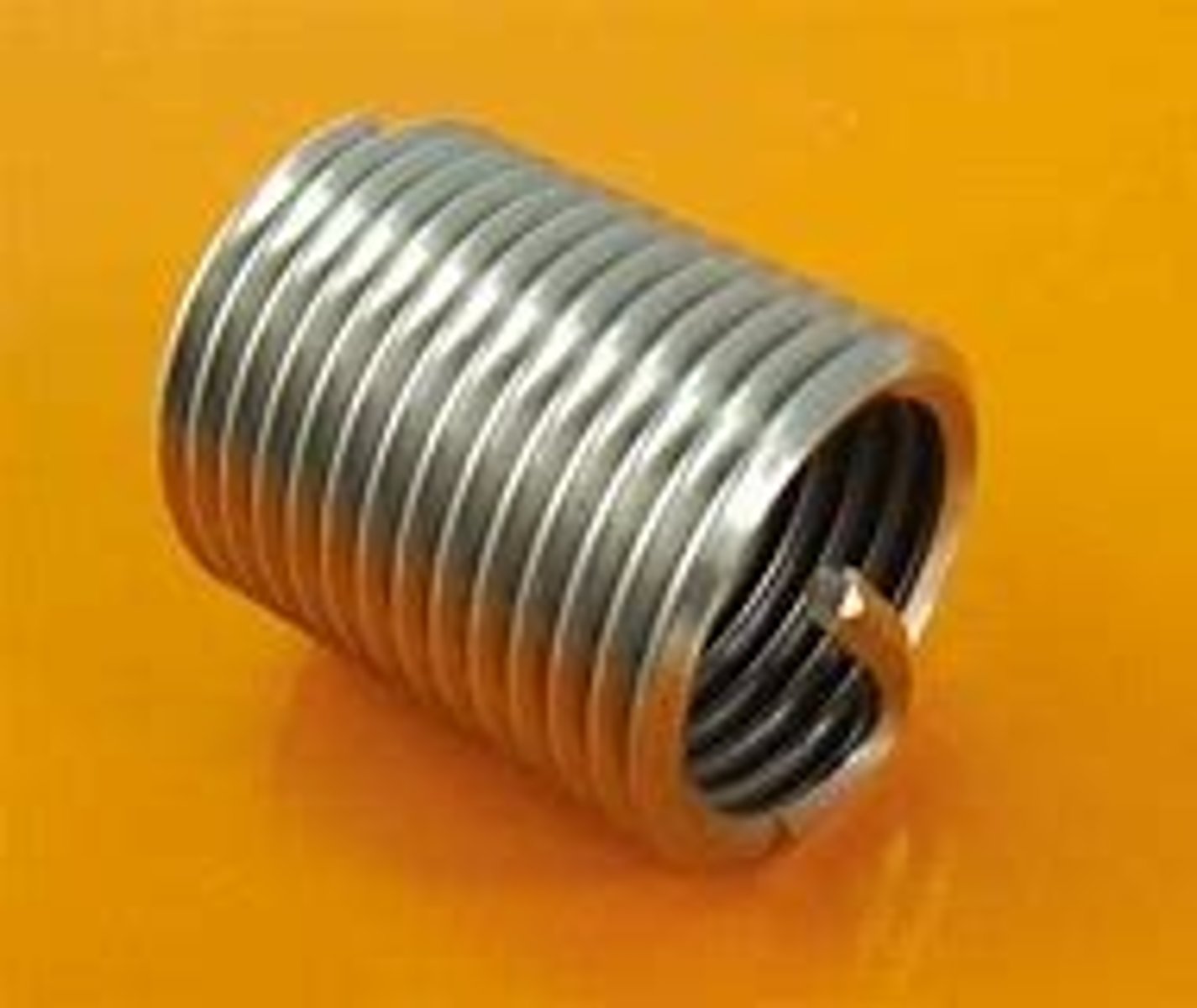
Wood Screw: Made of softer metals and so the screw heads are often damaged making them hard to get out. We don't use them anymore. Not hardened steel
What type of screw is this? (Softer metal)
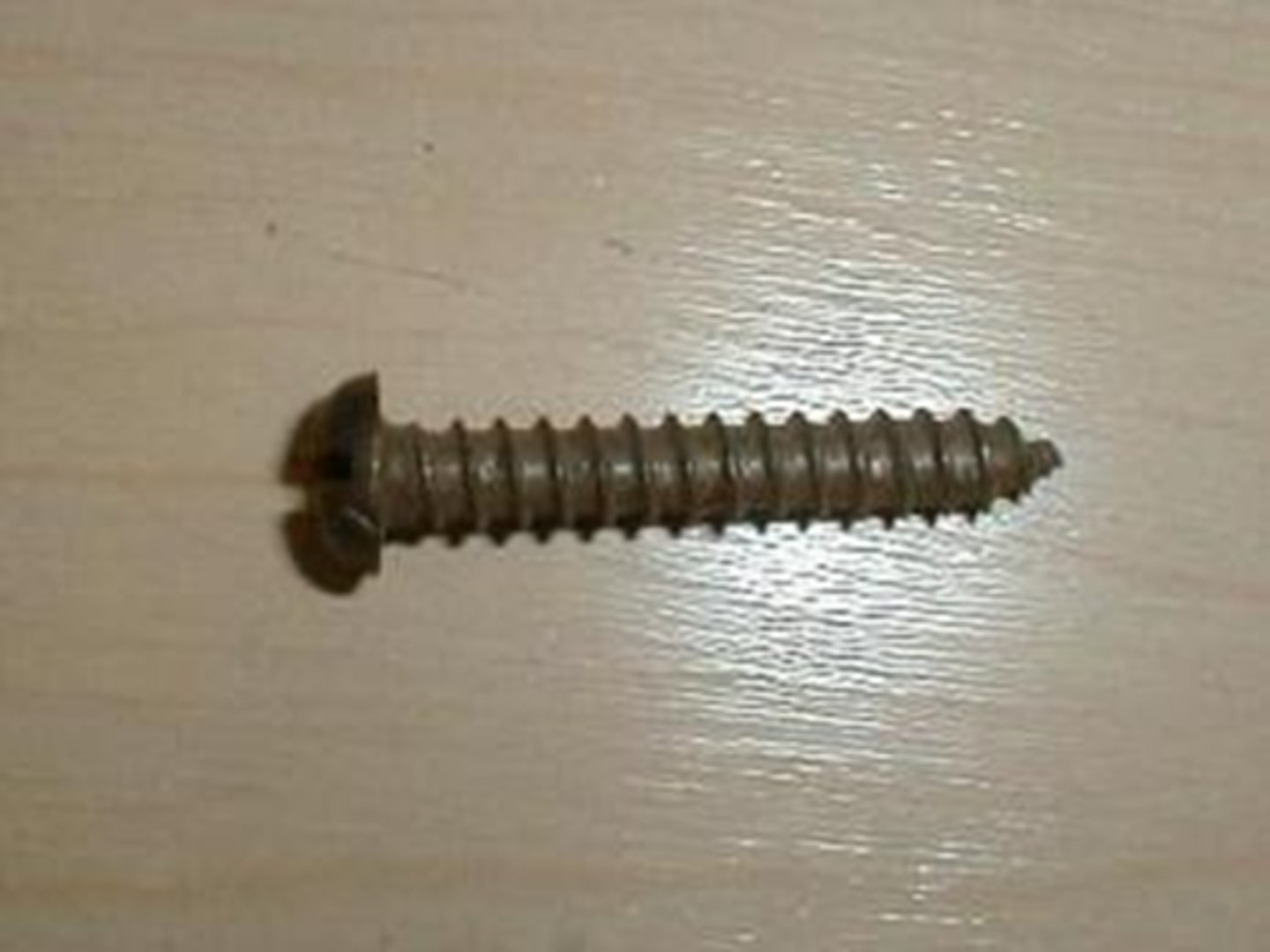
How good the hardware is: #2 - bad but better than wood, #5 lowest used on machinery, #7 good
What is a grade?
Common Washer: Used regularly to spread the load out, lock washers stop the wash from getting loose
What is this?
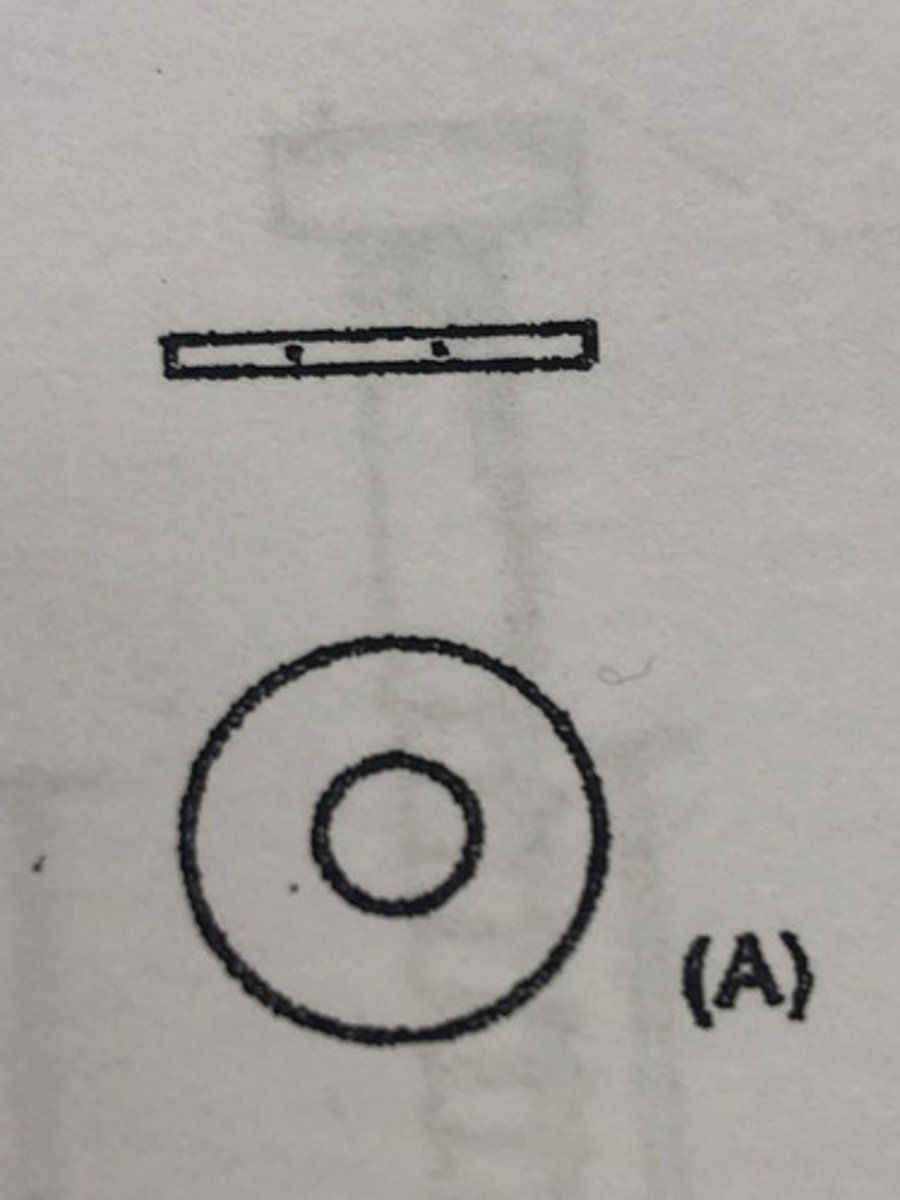
Wing Nut - for things you'd like to get out again/to hold things temporarily
What is this?
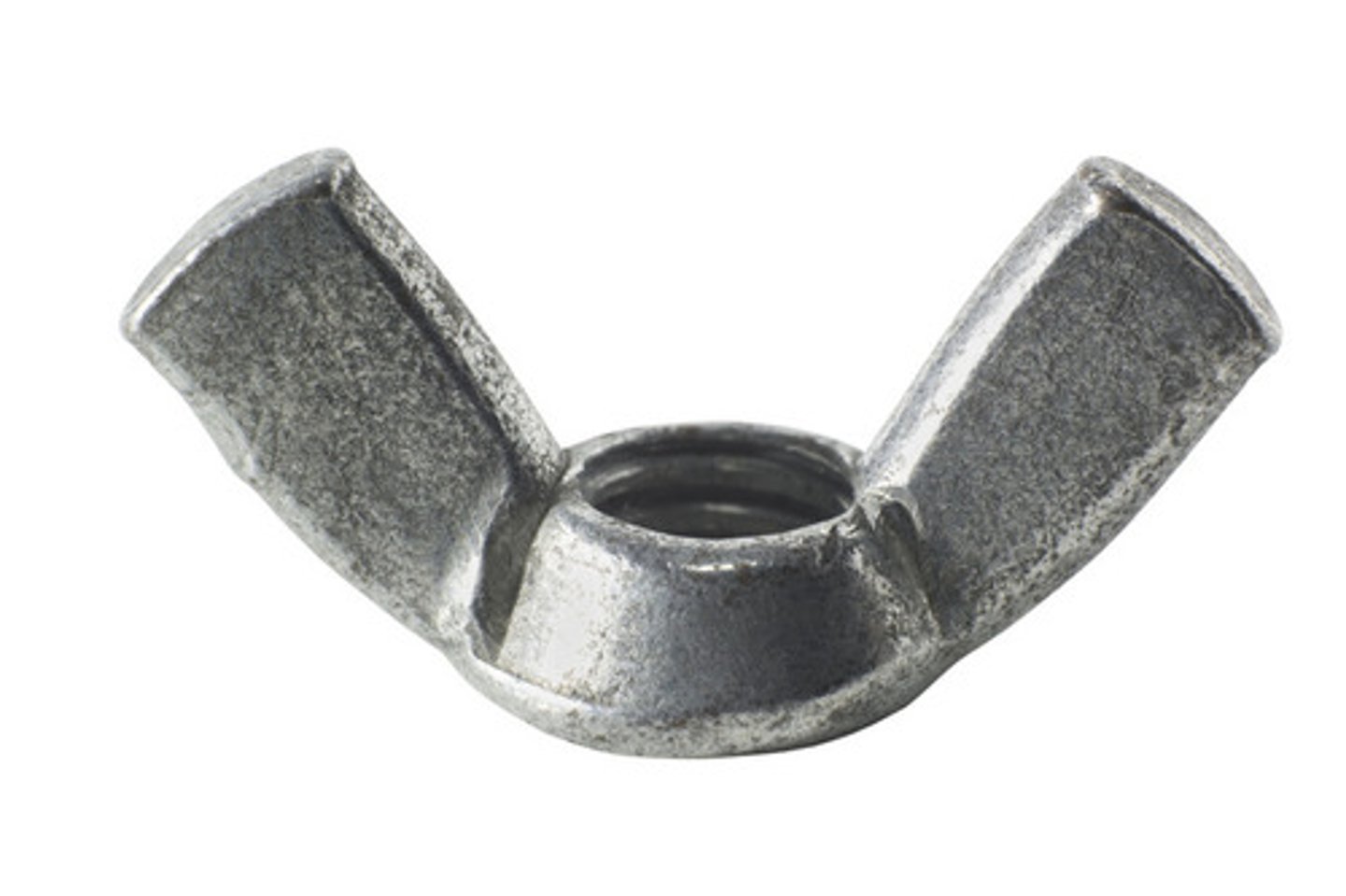
The size of nails is designated by the term penny, which is symbolized by the letter d. There is a rough equivalency between the length of the shaft, or shank, of a nail and the penny designation: the higher the number, the longer the shaft.
How is nail length measured?
Common nail. Has a large head and thick shank. It is used for heavier general construction — platforms, bracing, and the like. Have a fairly large diameter in the hope that it doesn't buckle. Not used a lot in theatre. More likely to split thin lumber. Used when you're worried about stability
What type of nail is this? (Large head, thick shank)
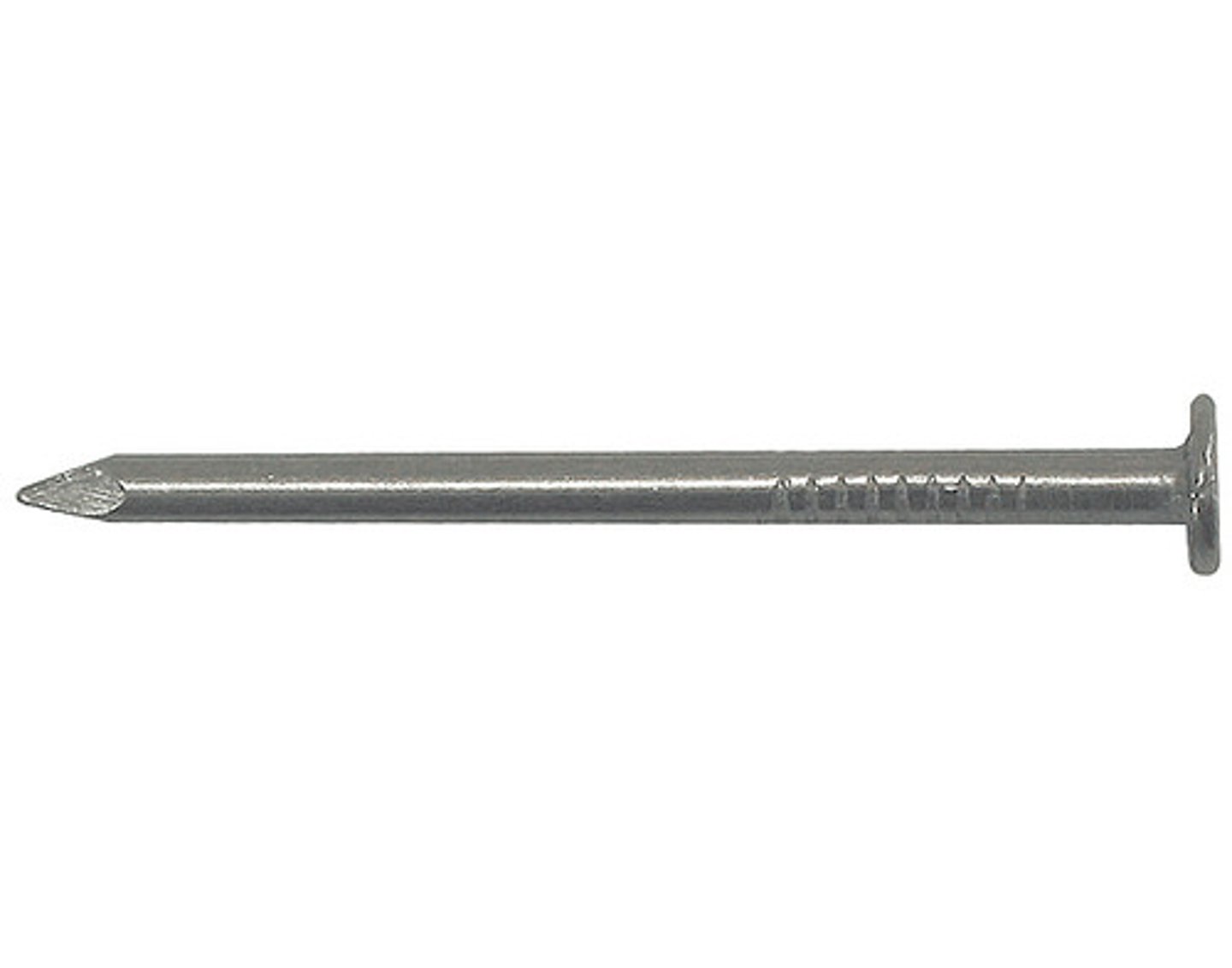
Brad Nail. Small (under one inch long) finish or box nails with very slender shafts (less than a ½ a milliliter diameter). They are used in property construction or for attaching delicate decorative moldings or panels to larger scenic elements.
What type of nail is this? (Extremely small and slender)
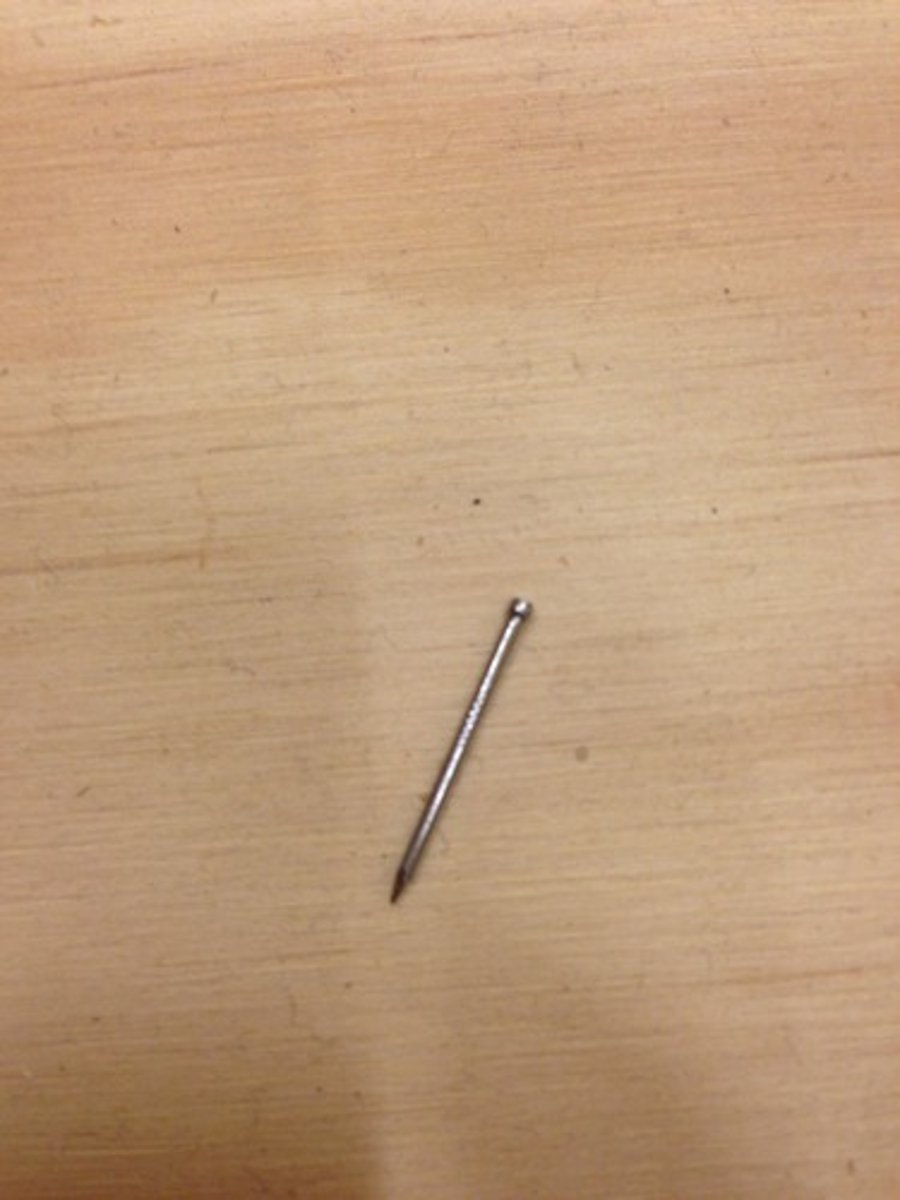
10d Finish Nail
Which is longer, a 6d common nail or a 10d finish nail?
Plastic coalition: allows the round heads to be set apart enough so there are no problems. Wire collations: have clipped heads (half moons) which are generally less stable, but sit closer together. In theater, we can use clipped nails bc we aren't really looking at the structure.
What are the two collation types for a collated round headed nails?
The angle at which the nails are stacked in the collation (NOT the angle they're driven into the material)
What is the collated nail angle?
A tool driven by air pressure
What is a pneumatic tool?
Length, crown width, wire gauge
How to specify a staple
More secure than nails at times as they provide two points of contact. Medium: 7/16 inch width (European), 1/2 inch width (American), 16 gauge, 2-inch length max, packaging, platform frames, and carton closing. Narrow: ¼ inch width, 18 gauge, up to 1.5-inch length, securing thinner wood onto thicker wood
What are medium and narrow crown staples used for
Round
What screw head is this?
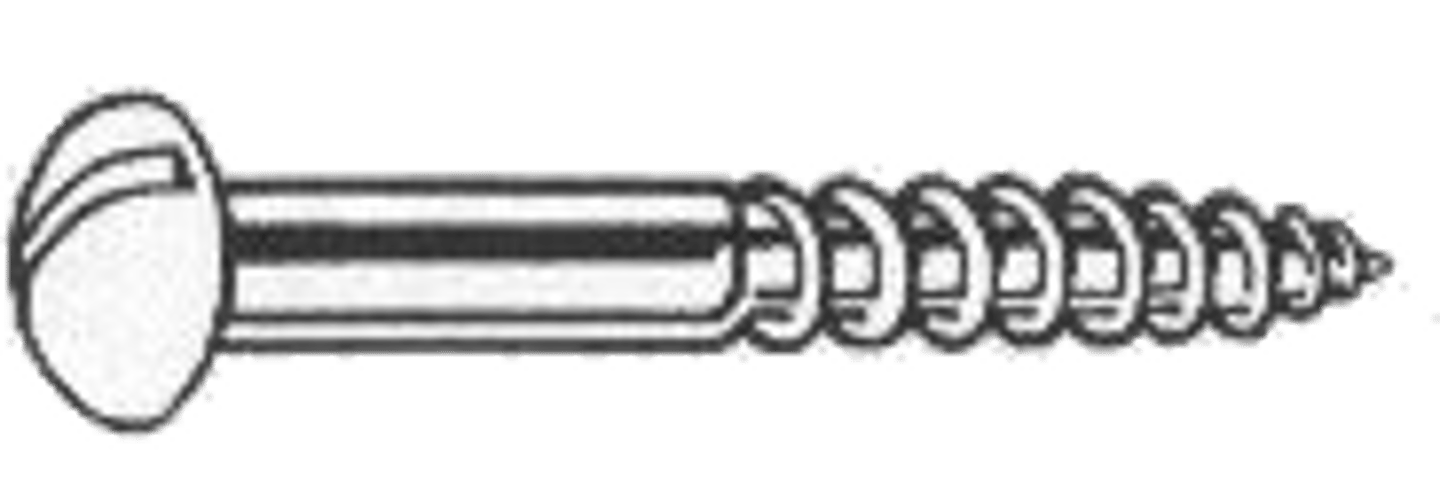
Bugle
What screw head is this?
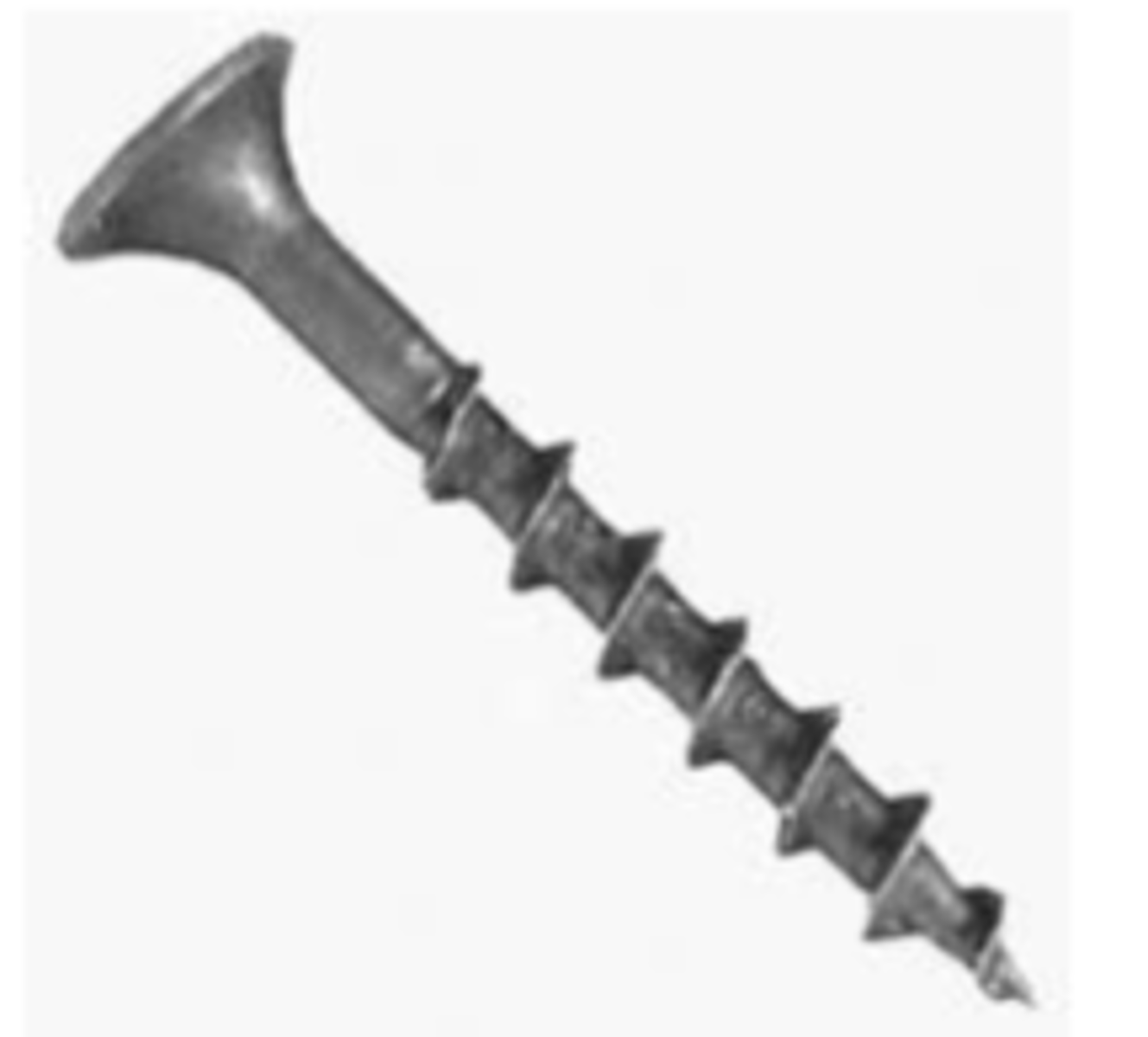
Hex
What screw head is this?
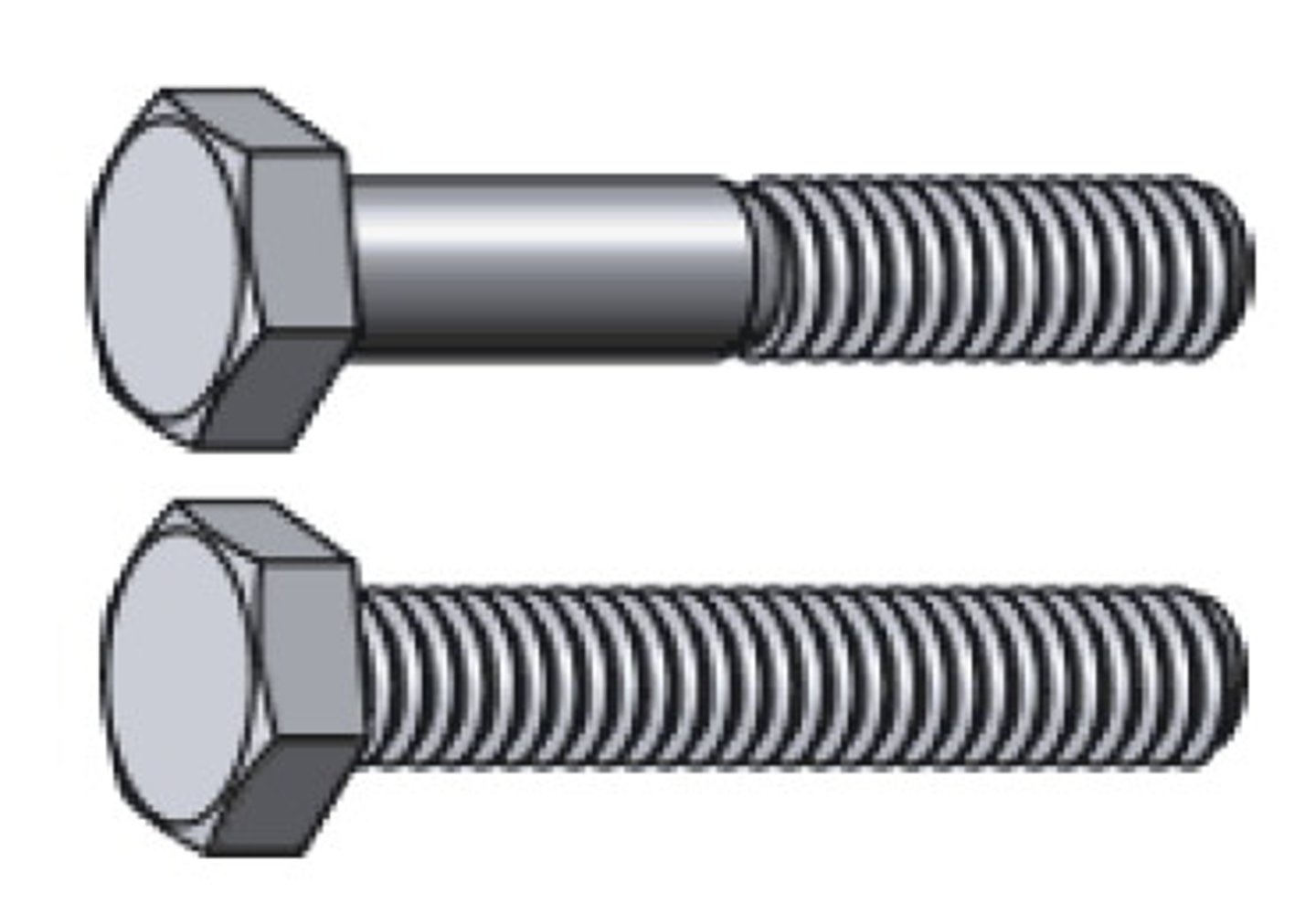
Drywall Screw: Coarse-threaded, Phillips-head, self-starting (don't need a pilot hole) and are designed to be driven with a power screwdriver. Have excellent gripping power and can be quickly attached and easily removed. However, often shear or break when driven into thick/dense wood. Yellow/gold or dark grey (former is stronger). Very sharp. Has a bugle head - doesn't split the paper. Brittle. Cheap.
What type of screw is this?
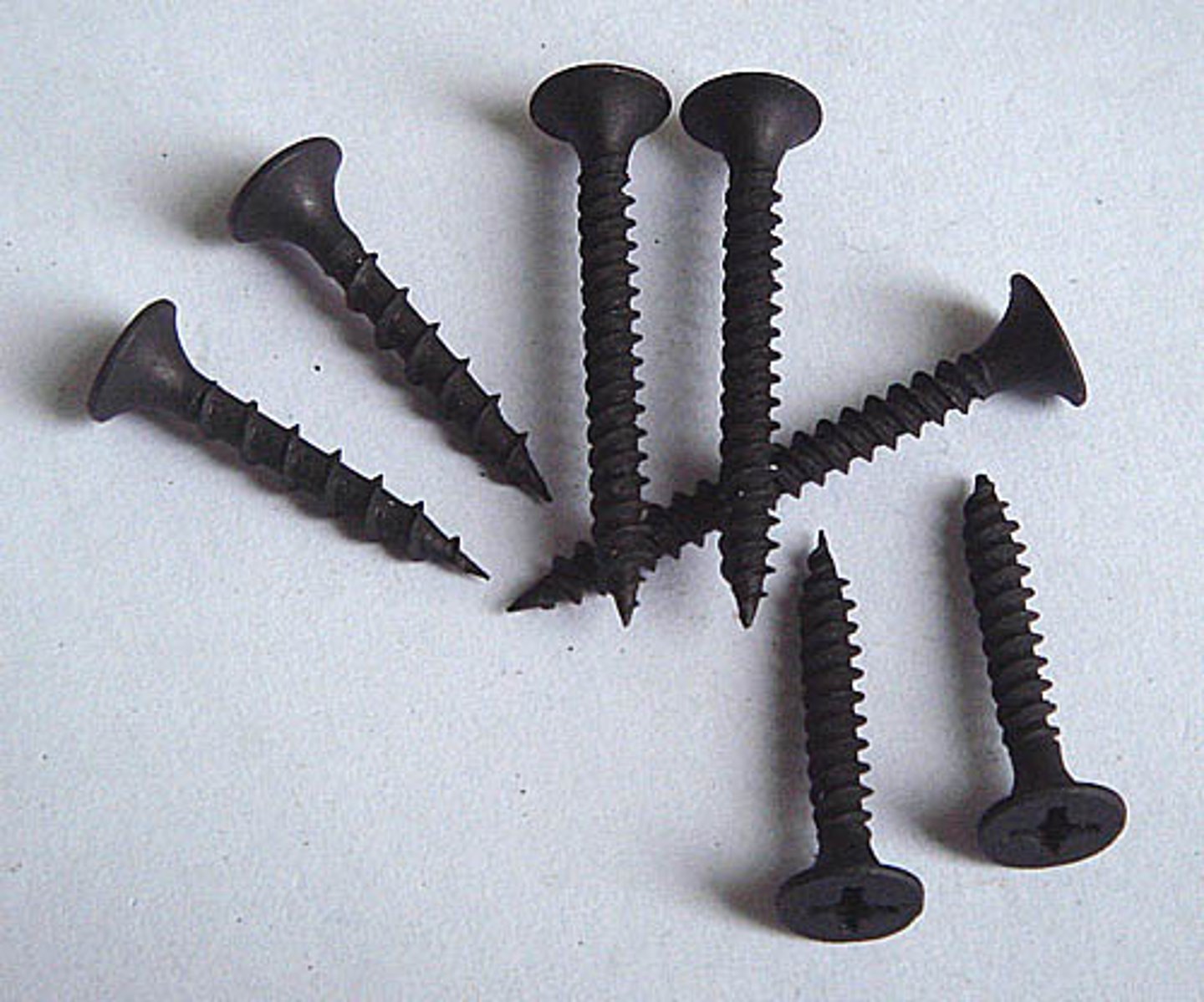
TEK Screw: Used to attach plywood coverings to metal frames. Often pan/flat head, hex head, or round head. Pan/flat head common in scenic construction - top of the head can be driven flush with the face of the covering material. No pilot hole needed - tip of screw is hardened and sharpened. Can be used to screw into any steel thinner than the drill bit-shaped end
What type of screw is this?
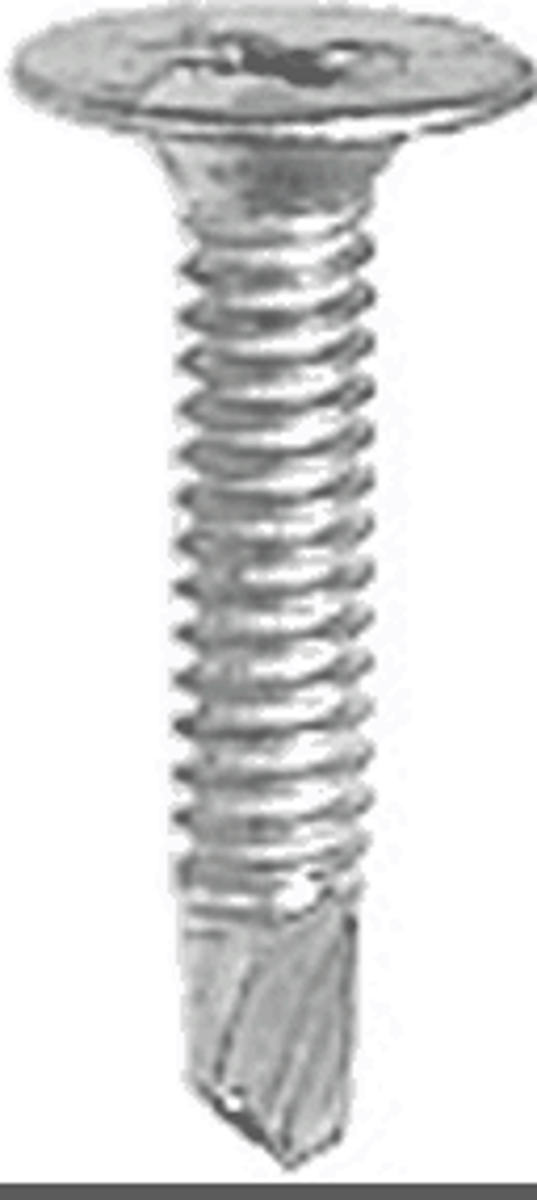
#12 screw. The gauge goes from 0000 to #14.
Which is bigger, a #6 screw or a #12 screw
Carriage Bolt Head
What type of bolt head is this?
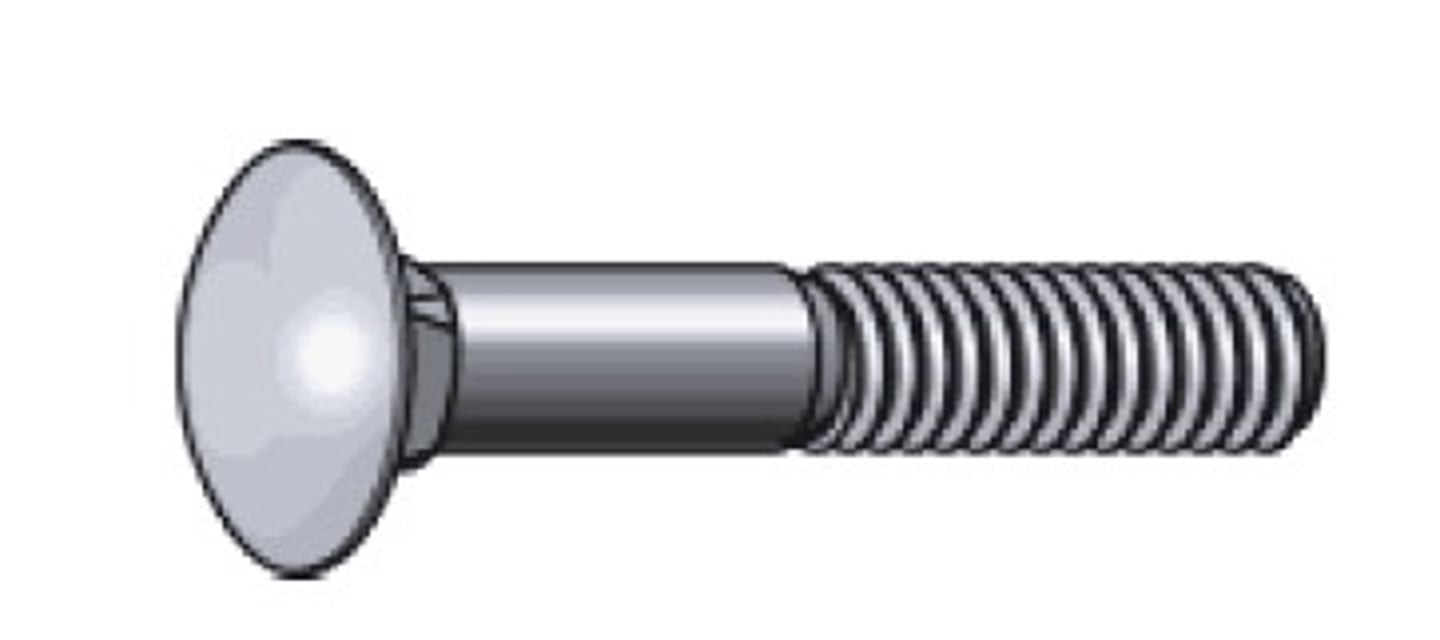
How many threads are there in a given length. Imperial (how many threads in an inch) or metric (how long it takes to wrap around once). Can have up to like three different pitches: #6 gauge can be 32, while #10 is 24 or 32. Finer pitches are more expensive and wanted
What is the pitch of a bolt or machine screw and why does it matter?
Flat head- head included in the length. Anything else - head not included in the length.
How is the length of each bolt type measured?
#10 machien screw
Which is bigger, a #6 machine screw or a #10?
Screw has a pointy end, is self-tapping, and has no nut.
What's the difference between a lag screw and a bolt?
T-nut: An internally threaded tube surrounded by a pronged washer. A hole, the same diameter as the tube portion of the T-nut, is drilled into the wood in the proper location. The T-nut is then driven into the hole. The prongs prevent the T-nut from turning when the bolt is tightened.
Is this a t-nut or a threaded insert?
